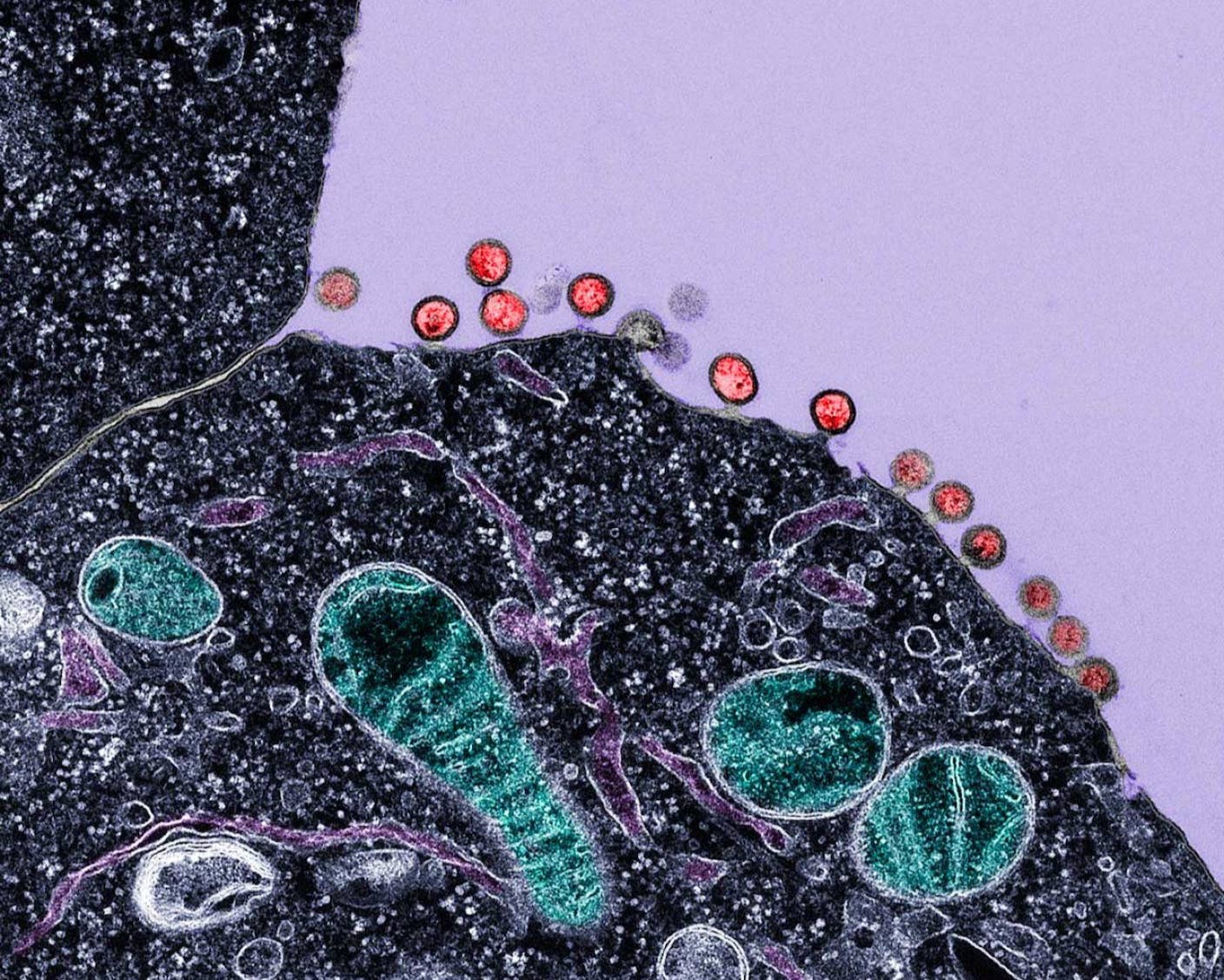DARPA Is Engineering Light-Activated Drugs to Keep Pilots Alert

Share
We’ve all been there: A tight deadline, an overnighter, and the next day we’re navigating life like zombies.
For fighter pilots, the last step isn’t an option. During active duty, these pilots need to be in tip-top shape mentally, even when they’re deprived of sleep (which can be often). Typically, the treatment is your everyday cup of joe. But for longer durations of sleep deprivation, pilots are also prescribed stronger stimulants.
But as anyone who’s ever had too much caffeine knows, there are side effects. You get jittery. Your hands start to shake. Your mood takes a nosedive as the effect wears off and irritability sets in. And then you crash.
Prescription stimulants, such as dextroamphetamine, have even more severe side effects. As the name suggests, they’re in the same family as methamphetamine—or “meth”—and come with the risk of addiction. These drugs last longer inside the body, so that when trying to sleep after a tiring day, they keep parts of the brain in a semi-alert state and mess with sleep schedules. People taking dextroamphetamine often need sedatives to counteract lingering effects, and the chemical regime takes a toll.
Over time, the lack of restorative sleep impacts memory, cognition, and reasoning. It also damages the immune system, metabolism, and overall health.
The drugs work in short bursts. What if there’s a way to turn them on and off at will—giving the brain just a tiny dose when needed and quickly shutting off its effect to allow a full night’s sleep?
One solution may be light-activated drugs. The Defense Advanced Research Projects Agency (DARPA) announced a project in June to develop these types of drugs to combat sleep deprivation for fighter pilots. So-called photopharmacological drugs would add a molecular “light switch” to drugs like dextroamphetamine.
Pulses of light activate the drugs in parts of the brain on demand. Non-targeted brain regions aren’t exposed to the active version and continue to work normally. Once the pilots are alert, another pulse of light shuts off the drug, giving the body time to break it down before bedtime.
To make this vision a reality, the new project, Alert WARfighter Enablement (AWARE), has two research arms. One will develop safe and effective dextroamphetamine that can be controlled with light. The second will focus on engineering a wearable “helmet” of sorts to direct light pulses toward regions of the brain involved in alertness and mental acuity.
“To achieve the beneficial effects of stimulants on alertness without the undesirable effects of the stimulant on mood, restorative sleep, and mental health, a new approach is needed to enable targeted activation of the drug,” Dr. Pedro Irazoqui, AWARE program manager, said in a press release.
Brain on Alert
After a terrible night’s sleep, the first thing most of us reach for is coffee. Caffeine, its active ingredient, is the most widely used psychoactive substance in the world, with over 80 percent of people in North America drinking a cup of joe every morning.
While this is also the go-to solution for most fighter pilots, multiple countries have developed far stronger concoctions to keep their brigades awake. The most notorious is probably methamphetamine, first synthesized in the late 1800s. Best known by its street names—meth, crank, or speed—it was used during World War II to keep troops awake, before being outlawed across the globe. A safer spin-off, dextroamphetamine is currently prescribed to increase alertness and cognition. While effective, it can trigger both irritability and euphoric effects—a recipe for potential addiction.
The Air Force has approved other types of chemical drugs, such as modafinil, to battle fatigue too. Research in mice and people found these drugs can improve many cognitive functions—for example, navigating space, keeping multiple things in mind, and boosting overall alertness even when severely sleep-deprived. Unlike amphetamines, this group of drugs isn’t as addictive, with effects compared to drinking roughly 20 cups of coffee without the jitters. But they can produce pounding headaches, sweating, and in rare cases, hallucinations.
Light-activated drugs may be another option. First devised for cancer, these drugs have a molecular “light-switch” component that responds to pulses of light. The switch can be tagged onto conventional drugs, making it easy to adopt for existing medications—like, say, dextroamphetamine.
The “switch” component changes the chemical’s shape after being blasted by different wavelengths of light. Like transformers, one shape allows the chemical to grab onto its usual targets—the “active” state. Other configurations inactivate it.
Be Part of the Future
Sign up to receive top stories about groundbreaking technologies and visionary thinkers from SingularityHub.


Light-activated drugs have been tested in cells in petri dishes, but targeting the brain presents a hurdle—the skull. Shining a flashlight onto the skull obviously wouldn’t reach the brain, and invasive brain surgery is out of the question.
There’s a workaround. Infrared beams of light, at low levels, are safe in humans and can penetrate deep into tissues, including through the skull and into the brain. A previous study designed a number of potential switches that could be turned on with infrared light. And recent advances in AI could further aid the effort to develop “a photoswitchable version of dextroamphetamine that is inactive except in the presence of near-infrared light, which activates it,” wrote DARPA.
The other component is a programmable light-emitting helmet that transmits infrared light to the parts of the brain associated with wakefulness, reasoning, and decision-making. Over time, the stimulation could be personalized, so people only receive the necessary “dose” to stay alert.
The strategy still floods the brain with stimulants through a pill, but it limits the drug’s activity in time and space. With personalized dosages and light as a controller, it could lead to alertness without anxiety, irritability, or euphoria for each person. Switching the drug off also allows the brain to “rest” during a good night’s sleep.
A Three-Year Plan
AWARE is slated to last over three years. DARPA is now welcoming proposals that fit the program’s two goals, including developing light-activated dextroamphetamine, dubbed “PhotoDex,” that can be rapidly turned on and off in the presence of near-infrared light. All candidate drugs will first be validated in animal models, before moving on to human trials.
For the headset, the project envisions a setup that emits infrared light and reliably activates necessary parts of the brain at millimeter-resolution, roughly that of an MRI-based brain scan. The timeline is about a year, and the agency did not specify how the headsets should be designed—for example, wired or wireless, how they’re powered, or what mechanism turns on the light beams.
“The idea is very ambitious, but recent advances in the creation of phototherapeutics and light-emitting devices offer good reason to be optimistic about the prospects,” Dr. David Lawrence at the University of North Carolina, who is not involved in the project, told New Scientist.
For now, photoswitchable drugs have not yet been approved for human use. If the AWARE program goes as planned, it could open a new avenue for targeted drug treatment, not just for battling sleep deprivation, but also for other brain disorders. The project is well aware of the ethical, legal, and societal implications, and has plans to discuss the technology’s use.
Image Credit: US Air Force photo by 2nd Lt. Samuel Eckholm
Dr. Shelly Xuelai Fan is a neuroscientist-turned-science-writer. She's fascinated with research about the brain, AI, longevity, biotech, and especially their intersection. As a digital nomad, she enjoys exploring new cultures, local foods, and the great outdoors.
Related Articles

New Gene Drive Stops the Spread of Malaria—Without Killing Any Mosquitoes

New Immune Treatment May Suppress HIV—No Daily Pills Required

Scientists Just Developed a Lasting Vaccine to Prevent Deadly Allergic Reactions
What we’re reading